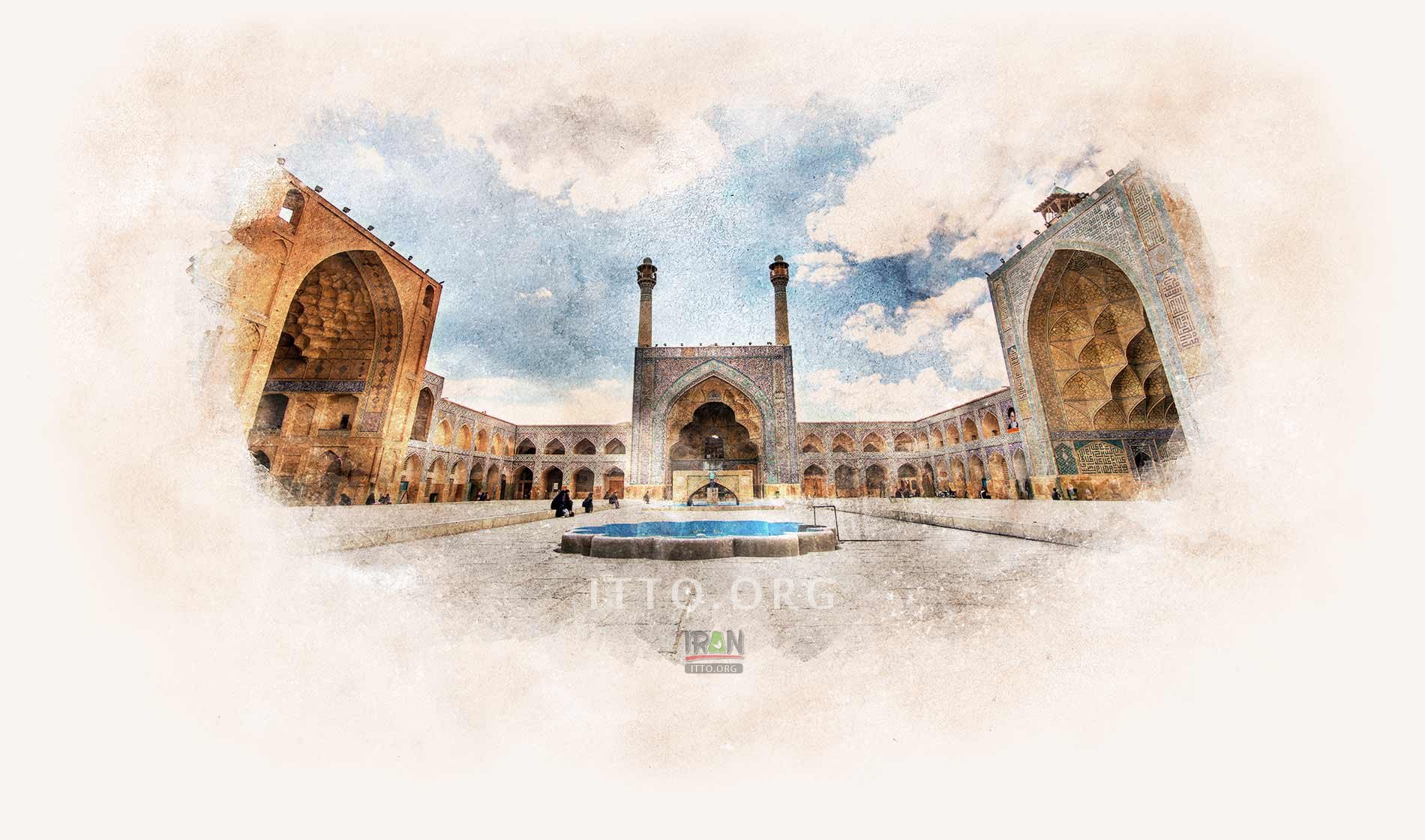Isfahan or Esfahan is in a north-south position, segregates the townships of the province into two eastern and western portions. To its north is the Markazi (Central) Province and to the south is in the neighborhood of the province of Fars. In its eastern direction, are the townships of Naein, Ardestan, Natanz and Kashan, and to the west are the townships of Golpayegan, Najaf Abad, Khomeini Shahr, Falavarjan and Shahreza. Its center is the city of Esfahan.
This city was the capital in the Parthian era, and in the Sassanide period came under the influence of the seven large influential families of Iran or the Espoharan. On the advent of Islam, till the early 4th century AH, it was under the jurisdiction of the Arabs, and was favored by Mansur one of the Abbasside Caliphs during his rule. In the year 319 AH, Mardavij Ziyari selected Esfahan as the capital and so too in the year 327 AH. when Rokneddin Deylami chose the same as the capital city during his rule. But in the year 443 AH. Togrol Saljuqi proved victorious here, and this was the cause of various erections such as mosques, buildings and palatial mansions in Esfahan. However, in the year 639 AH, Esfahan was invaded by the Mongols, and after their drawback the city flourished again. Only to witness severe damages during the assault of Teimoor the lame.
Shah Abbas Safavid was responsible for returning Esfahan to its former glory in the year 1000 AH. when this city was appointed as his capital. His successors were liable for the construction of palaces, and gardens of Sa'dat Abad and Farah Abad. After the decline of the Safavid dynasty and the fall of Esfahan by Mahmood Afqan, the city turned into shambles, thriving once more during the Afshar period. But during the Zandiyeh and Qajar reign, when the cities of Shiraz and Tehran were selected as capitals respectively, progress in the city of Esfahan came to a halt.
This city saw further decline during the reign of Zilul Soltan, the offspring of Nasereddin Shah Qajar in the year 1276 AH. However, during the Pahlavi reign, the territory and city of Esfahan witnessed industrial development, and in the last two decades the city of Esfahan has thrived to a great extent. In that, focal renovations and changes have taken place. Today, Esfahan is one of the vital cities in respect to tourism not only in Iran, but also in the world.


